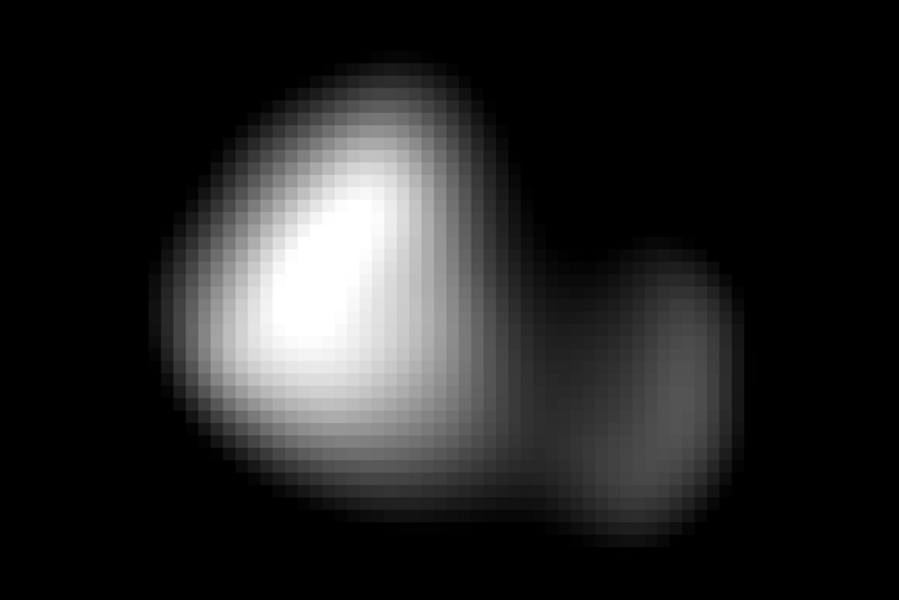Kerberos revealed: Pluto's smallest moon takes bizarre shape
Loading...
Keberos, the smallest of Pluto’s four moons, defied expectations when images of it taken by NASA’s New Horizons arrived on Earth earlier this week.
The moon appears to be smaller than scientists expected and has a highly reflective surface, observations that disprove predictions made before the Pluto flyby in July.
“Once again, the Pluto system has surprised us,” said New Horizons project scientist Hal Weaver, a professor at the Johns Hopkins University Applied Physics Laboratory in Maryland, in a statement released on Thursday by NASA.
The new images, which arrived Tuesday, show that Kerberos has a double-lobed shape. The larger lobe is approximately five miles across and the smaller lobe approximately three miles across.
Scientists speculate that the merger of two smaller objects might have formed the unusually shaped moon.
The reflectivity of Kerberos’ surface is similar to that of Pluto’s other small moons. It suggests that Kerberos, like the others, is coated with relatively clean water ice. NASA said the unexpected results would lead to a better understanding of Pluto’s satellite system.
Astronomers stumbled across Kerberos while searching for rings around the dwarf planet with the Hubble Space Telescope in 2011. At the time, they expected it to be big and dark – not small and bright.
“Now that we have new and more precise measurements of the orbits of the moons,” writes Mark Showalter, a senior research scientist at the SETI Institute in California, “I boldly predict that we will soon learn that the mass of Kerberos is much lower than we had previously thought.”
Originally designated S/2011 – and sometimes referred to as P4 – Kerberos is named after the three-headed dog of Greek mythology. All four of Pluto's moons are named for mythological figures associated with the underworld.
Kerberos is located between the orbits of Nix and Hydra, both of which Hubble discovered in 2005. Charon, Pluto’s third moon, was discovered in 1978.






